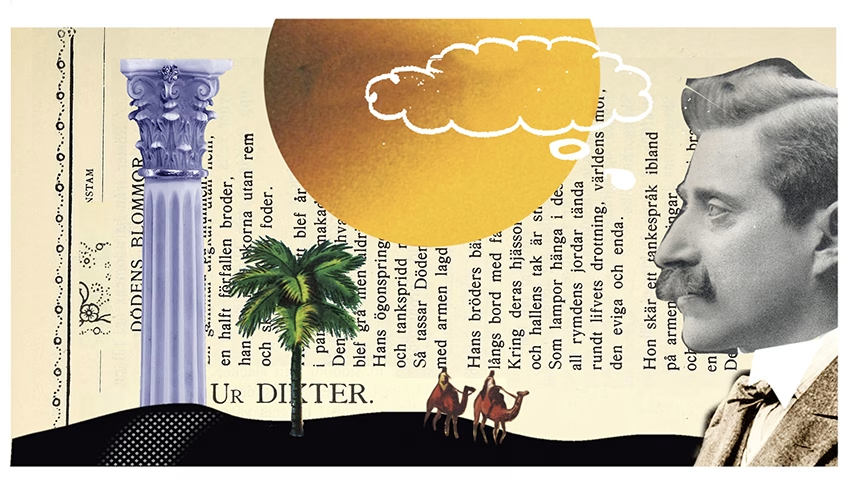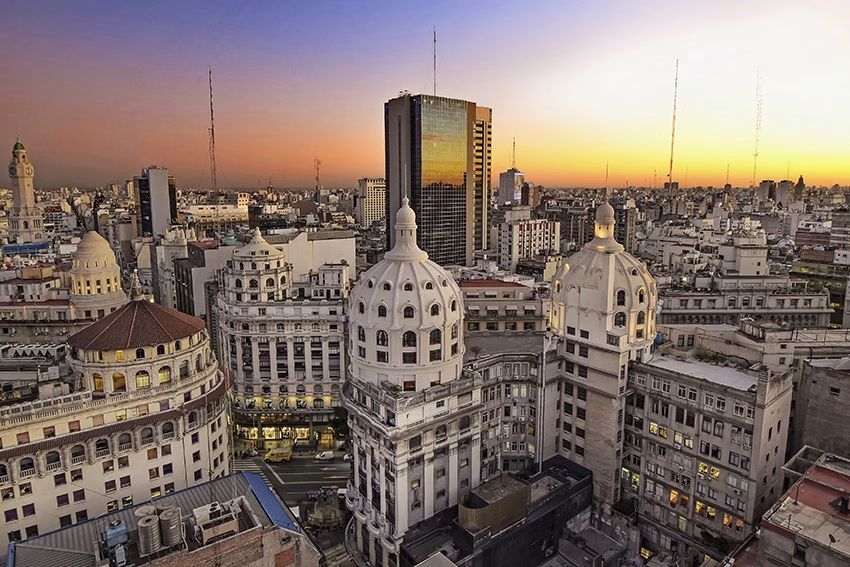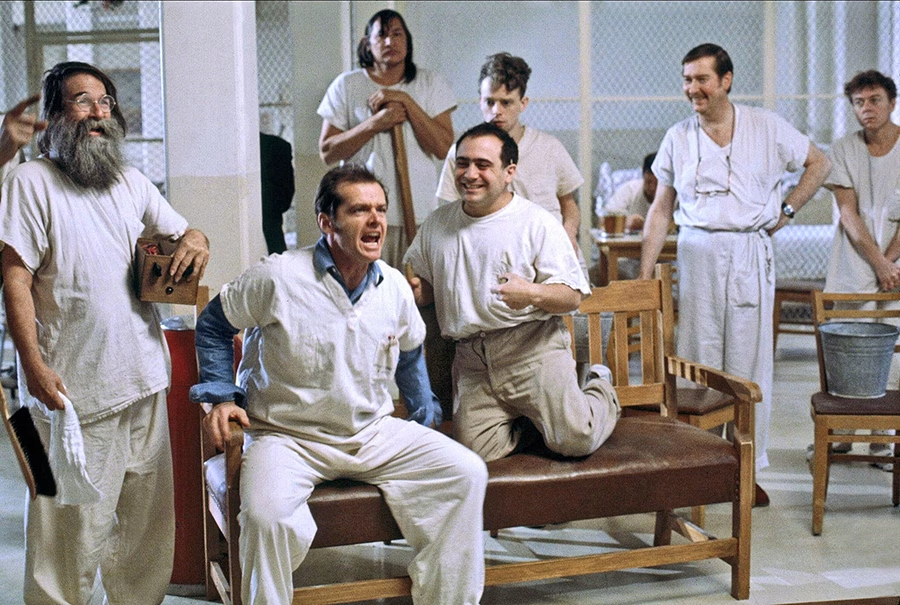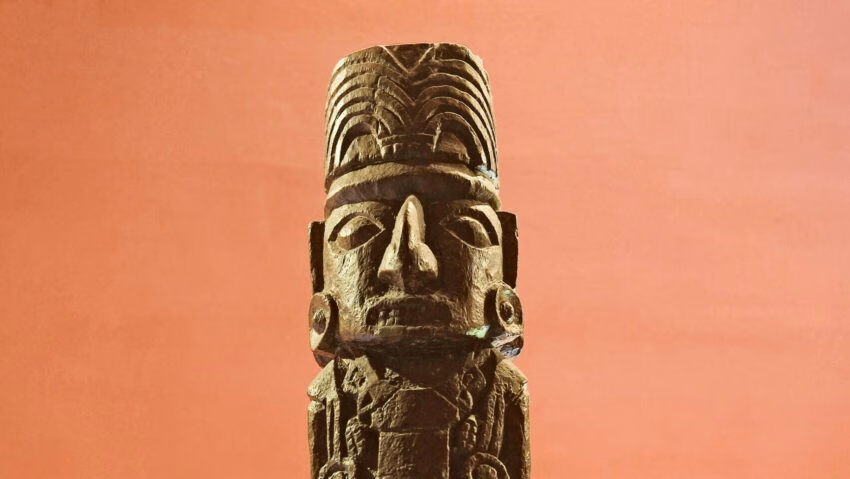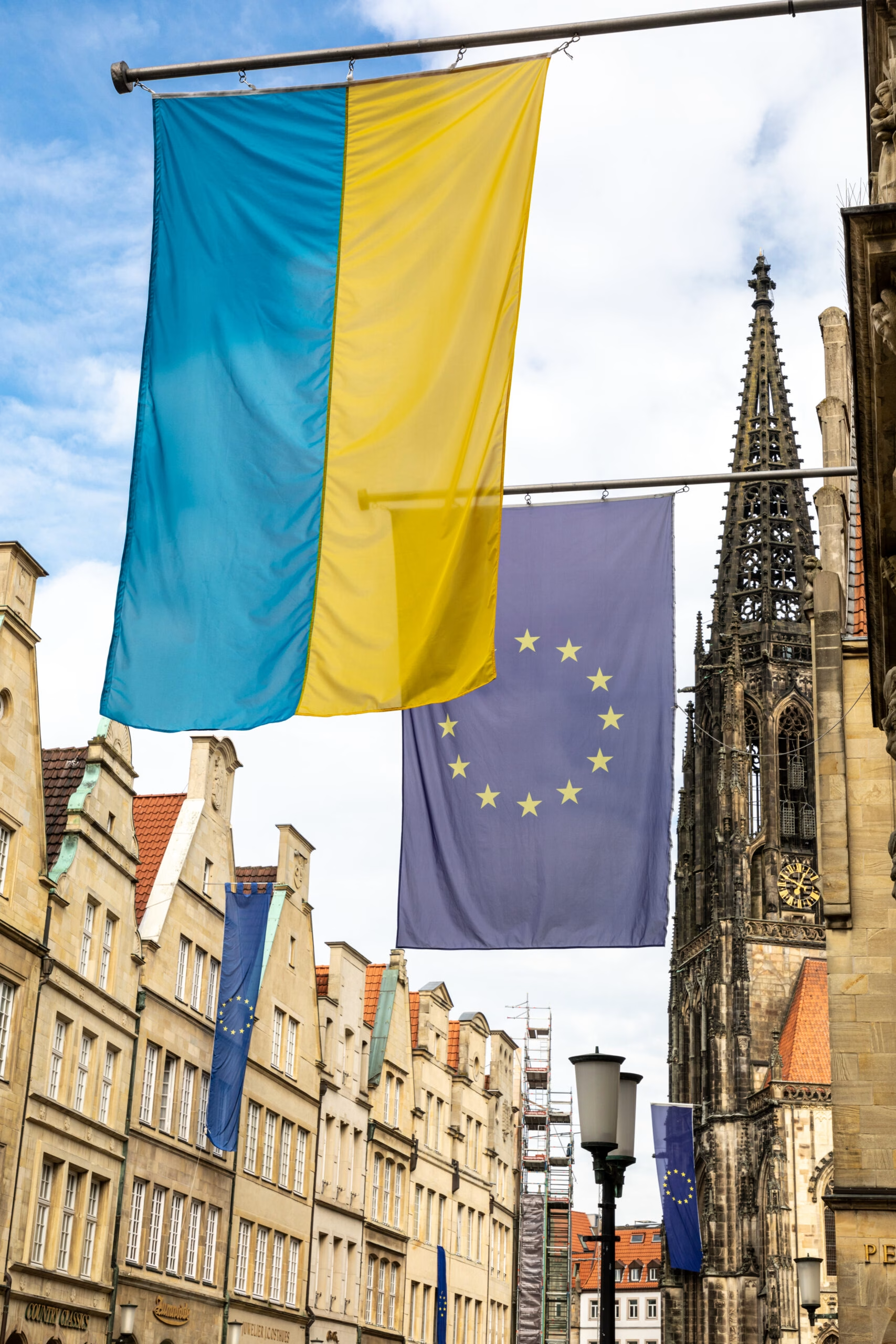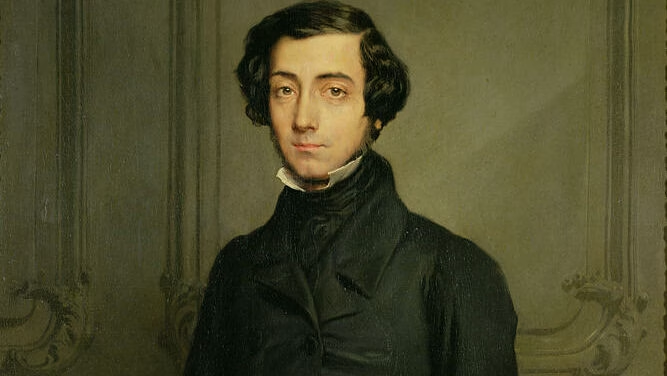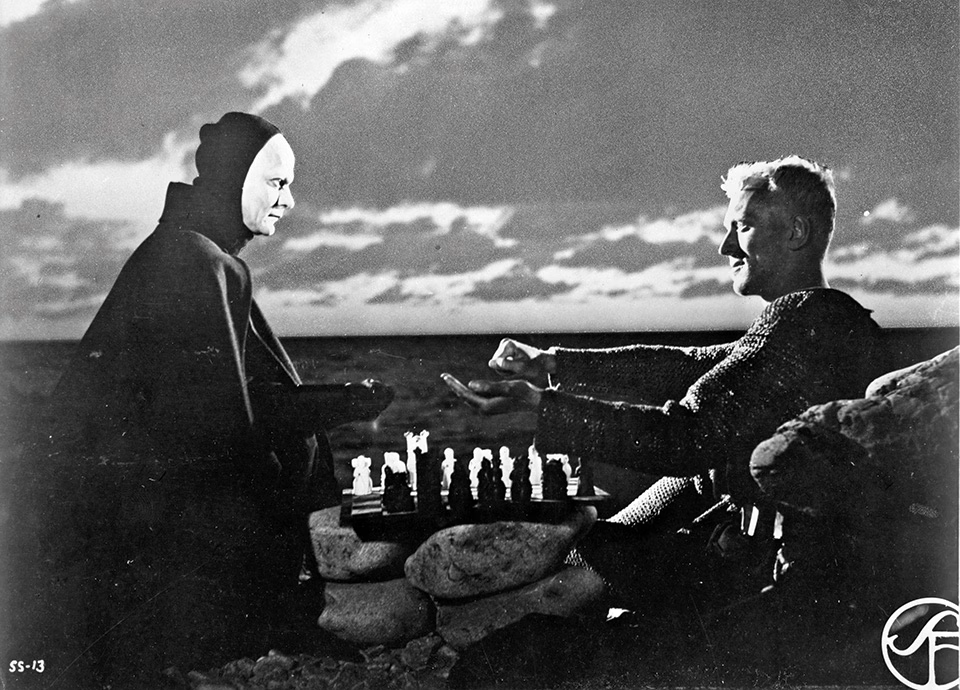The very rich and the very beautiful must not be naive. Everyone is attracted to them, but they can seldom be absolutely sure of the motives of those around them. Who loves them for what they are deep down?
A similar, gnawing doubt can affect a white person in a society which sets a premium on fair skin. When a dark woman – or, more rarely, a dark man – cultivates a relationship across the colour divide it is difficult for those involved to ignore the long term implications of the relationship – the opportunity on the part of the darker partner to “bleach” their offspring. You may love your intended with all your heart and without any ulterior motive, but just as it never hurts if he has a job and is in good health, then it never hurts in Brazil if he is, what is more, pale-skinned. The lighter party is in agreement with this, and at vulnerable moments he can be overwhelmed by the suspicion of having been selected precisely to this end.
Arguments of this kind make an exotic impression on those people who first came across racial complications in their North American form. In the USA people with a visibly African heritage were treated as black, and as a rule feel black, however light-skinned they are. One Hollywood star with a distant black ancestor was awarded a prize a few years back, which was interpreted as a “black” breakthrough. She herself had no objections to this way of thinking. For a Brazilian with the same appearance the term preto, black, would have been an insult. Being able to record a drop of white blood in Brazil has been just as decisive as having a drop of black blood in the USA. In Brazil there have been no racial laws since the abolition of slavery in 1888, but everyone knows that opportunities for advancement are different for jet-black and light brown individuals. Most Brazilians are nowadays pardos, light brown, and have both African and European genes, the outcome of which from generation to generation offers constant surprises. Dark individuals can have unexpectedly fair children and vice versa, and the skin shade and hair type of newborn citizens is studied with great seriousness by their kin.
Once many years ago I got to know a dark Rio girl called Irene. There were no traces of calculation on the part of this good person, but the kind of joke and meaningful glances from her family and friends affected me strangely. They teased her for her initiative in having got hold of branco, a white man.
On one occasion I found Irene in full swing with an arsenal of hair clips and pieces of plastic bag. There was an aura of the foul- smelling substance formol (formaldehyde) around her. She was treating her great mop of hair according to the escova progessiva, the “step-by-step broom” method – a home-made rack for torturing curly hair.
In my thoughtlessness I made so bold as to tell her the truth, namely that I set a higher valued on a curly natural state. I should not have done that. How could I be so conceited that I imagined that she was doing this for my sake! I believed I had been talking about externals, but the words had gone straight to her heart. It was as if I had ignored, no devalued, a relative lightness and straight hair – factors she regarded as vital resources and an aspect of her personality. It was as if I had said to this self-conscious mulatto girl: “I would rather have you black!” – a crushing insult.
In time I learned that hair is the most important part of the body in Brazil. Magnificent thick manes for which thin-haired northern Europeans would give years of their lives are regarded by their owners as a troublesome handicap, intended to be racked and combed at painful sessions with the hair stylist. The key phrase is cabelo ruim, an expression which can madden a neutral admirer. Cabelo ruim means “big ugly hair”. The hair described in its way is often very beautiful but it is now the current term for Afro hair.
In March this year we walked from the Consolação district down to the city centre in São Paulo just as the pavements started to vibrate with people. On the way we studied the hair of dark ladies and put ticks in the columns “Curly” or “Straight”. Some, primarily those selling corn on the cob or lottery tickets on the pavement, still had their authentic curly hair, free or fastened in a bun at the back. But the better-dressed and wealthier the dark-skinned women were, the straighter was their hair. Most had no waves at all; their hair was straight like the queens on an Egyptian tomb painting. It looked like an industrial product.
And it is too. Curly black hair and how to transform it is a multi-million dollar industry in Brazil, the world’s most subtle ethnic landscape and the most difficult to interpret. It is true that the extremely straight hairstyle in recent years has made inroads among black women in Europe too. (Whether it is a class marker in the same way as in Brazil, I am not aware.) In Brazil hair is very much more than fashion and vanity. It is obviously a strategy of life, cultural history and applied sociology all in one.
Along the pedestrian precinct 24 de Maio there are whole shopping centres specialising in hair strategies. There is a brisk trade when curly hair is to be straightened, black hair to be bleached and short hair to be lengthened. The current methods for straightening out Afro hair are expensive, unpleasant and dangerous to health.
The Society of Dermatologists has stated in a manifesto that it is a question of “a fever” on the part of the middle-class, and many of the underclass who get their ideals of beauty from the middle-class. Formalin, ammonia and other pungent, corrosive substances regularly cause injury and even death.
Until recently Heloisa Helena de Assis was a poor black girl living in one of Rio de Janeiro’s shanty towns.
“I could find neither work nor a fiancé because of my hair; I had a cabelo ruim,” she says.
Heloisa, who could not stand these strong substances, began to do her own experiments with herbs and other natural products. Eventually she found a formula which gave the same results as the industrial preparations, but without their side-effects. Today she is turning over hundreds of millions of kronor a year and has a complete range of her own beauty products, Beleza natural.
But why? In northern Europe millions are spent on curling and waving hair. Why should Brazil, which for such a long time prided itself on its humane and “racially democratic” character, put such stress on its daughters to submit themselves to such a banal hair canon?
Since a presidential decree in 2001 on compensatory affirmative action in the area of skin colour, more and more dark-skinned people have been appearing in pictures and on TV, both as weather forecasters and as ideals of beauty in advertising. But the predominance of fair-skinned people is still striking, considering Brazil is a country of “pardos” – brownish people with both European, African and indigenous South American genetic traits. Only townsfolk from the immigrant waves of the last century, who have not yet had time to deposit their genes in the crowd, have a typical appearance. But the ethnic mix happens very quickly, and even the Japanese, the most conservative minority nowadays often marry outside their own group.
Once when I was giving a lecture about Brazilian race relations, a female student protested: “My head is spinning and I understand nothing. You say that the slaves had a worse time of it in Brazil, but that racism was worse in the USA, that the Blacks in Brazil had a better time of it than in the USA after slavery, but that the myth of racial harmony in Brazil is just a fraud!”
You can really knock yourself out trying to dissect the concept of race, colour and class in Brazil. I usually start with an anecdote which is doing the rounds in various different versions. A father in the town of Bahía has three daughters. The oldest daughter gets married to a white worker. The next daughter gets married to a black doctor. When it comes to the youngest daughter’s turn to make her choice, she is quite confident, because she thinks she has understood that her father has no prejudices.
“You are wrong there,” objects her father sharply, “because I do. A worker – only if he is white. And a black – only if he is a doctor.”
The father’s scepticism against blacks is very tangible, but not absolute. The same goes for his attitude towards people with little education. He has both class and racial prejudices, but both of these prejudices are negotiable.
The racial landscape of Brazil is not a binary like that of the USA. It is multidimensional; individuals are points in a system of coordinates which has both a class axis and a skin colour axis. The distribution from both a socio-economic and an identity viewpoint is far more complex and unpredictable than in a racially determinist society like the USA.
There are many inspiring contemporary depictions of one day in May 1888 when rumours about the abolition of slavery began to circulate across the hills of Rio de Janeiro. Everybody put down what they were doing and crowds blocked the traffic. When confirmation arrived, expectation turned into euphoria, and the whole city became one big party. All work stopped; fireworks crisscrossed the sky and, as the country’s great writer Machado de Asis remembers, “For the first and only time in my life I saw people absolutely crazed with joy”.
That is no small thing. The same issue that had plunged the USA into Civil War the generation before caused no conflict at all in Brazil. Everyone celebrated, not merely the slaves. It was the same during the long years of slavery debates: those pleading for the system in the USA alleged at an early stage the innate inferiority of blacks. In Brazil no moral or ideological arguments were put forward for slavery. Those who defended it admitted that it was unjust, but an economic necessity as long as the major part of European immigration went to North America.
As soon as the plantation owners in São Paulo had assured themselves of an alternative source of labour – Italy’s landless agricultural workers – they turned their back on slavery with an astounding pragmatism. In Brazil people in general felt that abolicão brought the country honour. What an unfathomable difference from the southern states of the USA as they appear in Faulkner’s novels. Life had lost its meaning when “black” no longer meant “slave”, when black children also went to school.
A black person could be lynched and murdered in the Southern States not so long ago just on the mere suspicion that he had been close to a white woman. Most Brazilians were free mulattos long before the end of slavery! In the USA position and career could be ruined in a moment, like falling through a trapdoor, if a person was discovered to have black blood. This is what happens in Mark Twain’s Puddn’head Wilson (the Swedish title is En droppe negerblod , “A drop of negro blood”), and in Faulkner’s Absalom, Absalom, which is set long after the Civil War. In Brazil measures were taken to prevent such things: the leading politician of the Republic Ruy Barbosa gave orders that all slave registers were to be burned, so that no one could be embarrassed by what had been.
These glaring differences between the two great republics of the New World demanded an explanation. Until quite recently two tempting theories have existed, the American Frank Tannenbaum’s (1893-1969) thesis on the more humane attitude of the Catholic world to slavery, and the Brazilian Gilberto Freyre’s (1900-1987) related theory, lusotropicalismo, on the openness of the Portuguese and their multicultural attitude to colonisation.
In his little book Slave and Citizen, Tannenbaum showed how slavery had been a living reality on the Iberian peninsular throughout the Middle Ages. When the Portuguese began to buy Africans from black and Arab merchants at the beginning of the 15th century, it was not a question of introducing a new system. They already had slaves and they had functioning institutions and laws in this area. A slave was strictly speaking a person who had had some bad luck, not a subhuman. The church encouraged emancipation, and the greatest Spanish king of the Middle Ages, Alfonso the Wise (1252-1284) legalised the rights of slaves in his Siete Partidas. This baggage, Tannenbaum considered, was carried by Spaniards and Portuguese cross the ocean.
Freyre was born on a sugar plantation in Recife in the heart of colonial Brazil. In his Casa grande e senzala (The Master and the Slaves) he gives a tender depiction of the black wet nurses and kitchen maids who looked after the young white boy and brought him up on their stories, songs and candy. In Freyre’s time academic life in Brazil had been infected by ridiculous European racial theories. When he arrived at Columbia University in New York to study under Franz Boas, it was as if he could breathe fresh air for the first time. Boas’ thesis, revolutionary then and trivial today, was that it was not blood of different quality but different cultures that had been mixed during the history of humankind. Freyre was overwhelmed by the new insight. Racial mixture was not a defect but rather Brazil’s distinctive character and pride. This became his message to his countrymen, and he shaped it so suggestively that it remains a cornerstone of Brazilian national consciousness.
Freyre’s vision of Brazil was romantic, but it was not invented. White urban dwellers in today’s São Paulo live in a culture which is impregnated by the hybrids of the Afro- Portuguese cultural encounter; words, food, music, superstitions and a great deal else which is no longer possible to differentiate. There is nothing comparable to show in the USA.
What is more, from Freyre’s inspired depictions sprouted the charming little tale about Brazil as a society free of racism. Brazilian racism was not obvious, and when so many of the indigenous population could not see it, one can forgive those foreigners who were entranced by the racial-democratic myth. In 1940 the writer Stefan Zweig fled from a Europe laid waste by racism and nationalism. When he recovered in his new tropical homeland, he felt that he had come to a paradise, where children played together, studied together and courted each other in a variegated idyll. For Zweig, Brazil became an image of humanity before the Fall, before it had been driven mad by the demon-drums of race and nationalism.
The idea of racial democracy contributed to social peace because – not despite – the fact that it was a lie. Afro-Brazilians, and in particular the descendants of those who had been freed in 1888, were underrepresented in the professions, that was to be expected. But the prevalent feeling that time would heal all and put everything right had no justification. Racial prejudices flourished of course, and many authorities pursued a tacit, informal discrimination – as for example the ministry of Foreign Affairs, which never recruited any dark people. (Only in 2001, after a presidential decree on affirmative action, did the Foreign Ministry begin to recruit non-white candidates.)
As so often in the intellectual life of the Europe-fixated Brazil, the impulse for new thinking came from foreigners. When, in 1938, the French sociologist Roger Bastide was recruited to the new University of São Paulo, this marked the prelude to an intellectual revolution. Bastide had no patience with the sugary legends. He sent his students out into the countryside to investigate what it was really like. After they had botanised among the undergrowth of popular and institutional racism, there was not much left of the racial democratic myth. Even football, that shop window of racial democracy, was briskly undressed.
Bastide’s students became the intellectual figureheads of post-war Brazil: Florestan Fernandez, Octavio Yanni, and Fernando Henrique Cardoso who in 1994 was elected President of Brazil. In 2001, when he pushed through quotas for affirmative action, he mentioned the absurd fact that the country had no dark-skinned diplomats: “We need a diplomatic service which reflects our society. We are not a white society, and we will no longer allow ourselves to be represented abroad as if we were.”
A year or two ago the football star Ronaldo provoked derision when he declared that nowadays he regards himself as white. The statement did not do him much good in Brazil either, but there at least they understood what he meant. He, who had reached the stratosphere of celebrity, had had children with a brilliantly white photographic model and regularly straightened his curly hair – felt that whiteness was the reward of the victor.
Brodwyn Fischer from Northwestern University recently studied decades of police reports in Rio’s court archives in her search for racially discriminating testimony. She found much less than she had expected, but lots of other interesting material. One documented fight started when a white troublemaker called a non-white individual “you insolent nigger” and “vagabundo”. The person who had been insulted, who had a permanent job on the railway and clearly was not a “vagabundo”, burst out with:
“You’re the nigger; I’m a train guard and a regular guy!”
The white party in the disturbance understood the significance: the other man was not accusing him of having dark skin, but being a social misfit. Just as Ronaldo considered he had taken the step up to the level of white, a white person in Brazil can fall so far that he – I have heard it said – “almost becomes black”.(See Mats Lundahl’s article here for a striking example of the same phenomenon from Haiti.)
In this fluid and deceptive game, measurable categories such as class, colour and success mix with aspects of vanity such as straightened hair and bleached skin colour into a national syndrome that is difficult to grasp, in which your subjective skin colour is a function of a number of variables. Brazil’s model may be hypocritical and schizophrenic, but it never led to a bestial and compact oppression as in the USA. There racism forced all “blacks” into one single sociological mass. It was this very vulnerability which forced American “blacks” – irrespective of colour – to create multinational organisations and cultivate solidarity.
But the racism of the United States was “better” precisely because it was unambiguous and uncompromising, claim many black Brazilian activists these days. In Brazil few people are imprisoned in their identity, and as society has given mulattos and skilled blacks an exemption to enter the middle class, no solid Afro identity has arisen. The group has systematically lost its potential leaders, because when these gain honour and success, the last thing they want to do is to castigate the community that has accepted them.
Nadays we know that the slaves had a worse time of it in Brazil than in the USA. The slave trade to the USA was abolished earlier, and regeneration had to be secured. In Brazil it was more profitable to work a slave to death and then buy a new adult than to care for, feed and clothe an indigenous slave for 15 years before he began to provide a return.
The Portuguese were no kinder than the Brits, but they had far fewer white women available than the North American colonists. In the USA slaves were needed for one thing: to work on the plantations. In Brazil they were needed for many different tasks. In Brazil even the men who pursued runaway slaves were black, something unthinkable in the USA, where black men even before Independence were forbidden to carry weapons. (In Brazil black slaves often carried weapons.)
In the USA, where slaves had been given strictly defined tasks, hate and mistrust towards free blacks was something in the blood. In Brazil, where slaves were used for everything – the municipality of Rio de Janeiro had its own refuse collection slaves – everyone had encountered black businessmen, politicians and scientists long before the end of slavery, and the sight of ex-slaves on the free labour market aroused no resentment in principle. It was material, far more than cultural, factors which dictated the disparate development of the two communities.

Redan prenumerant?
Logga inAxess Digital för 59 kr/mån
Allt innehåll. Alltid nära till hands.
- Full tillgång till allt innehåll på axess.se.
- Tillgång till vårt magasinarkiv
- Nyhetsbrev direkt till din inbox




